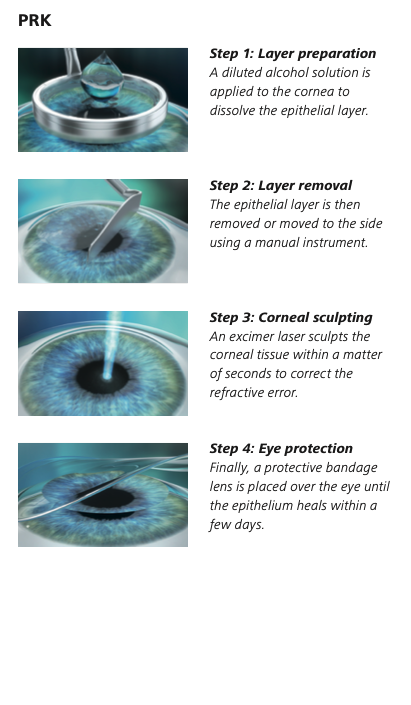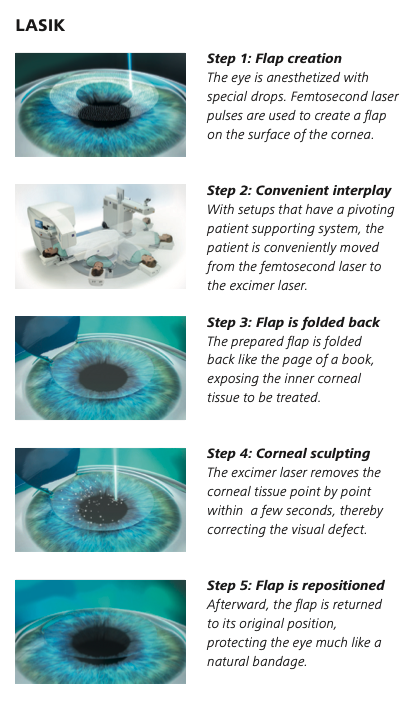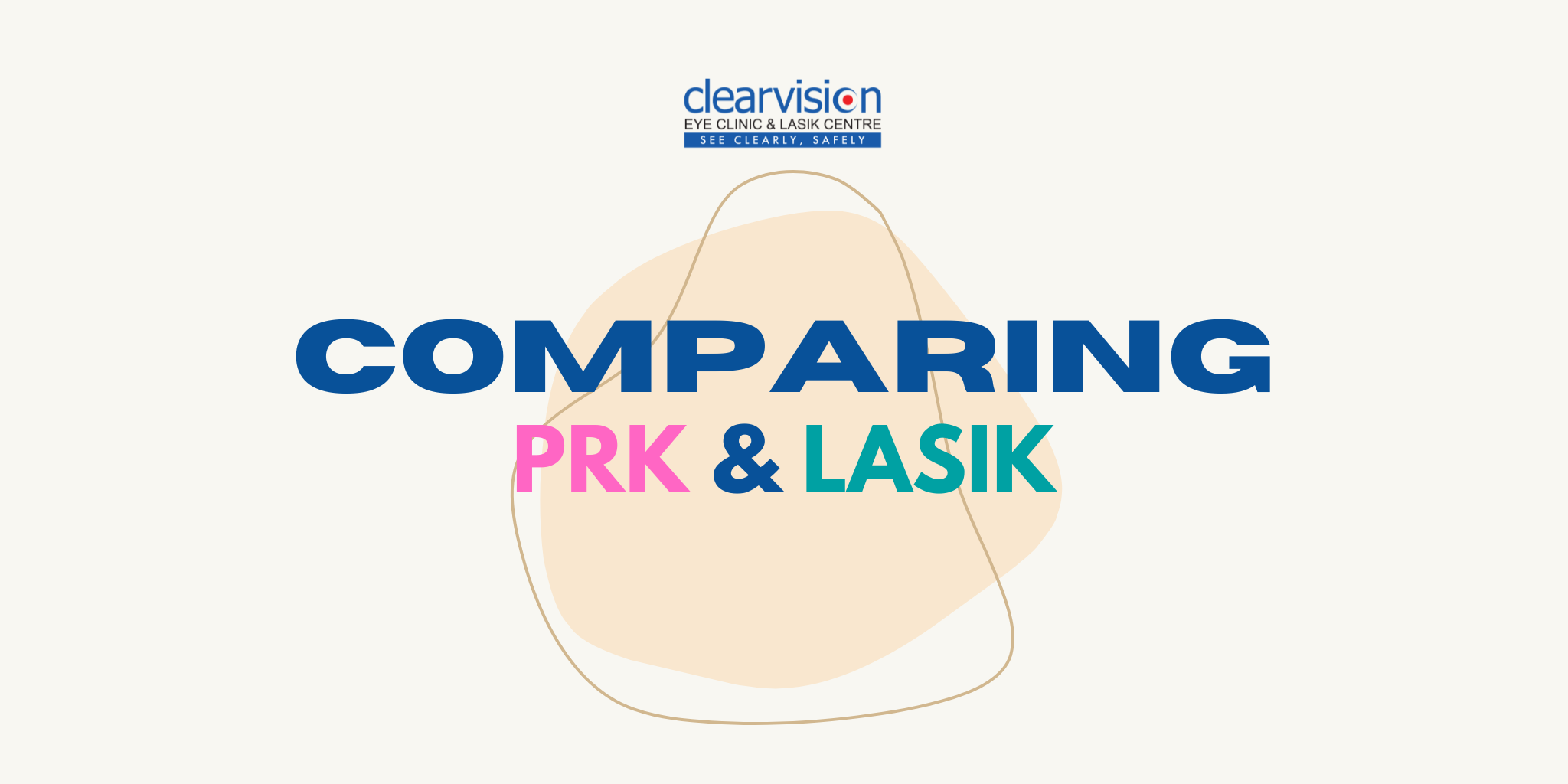Both PRK and LASIK are some of the longest standing and most well-known methods of laser vision correction. In this article, we explore the differences between the very first laser vision correction method created, PRK, with the most widely known laser vision correction method, LASIK.
Intro
PRK
PRK (PhotoRefractive Keratectomy) is an Advanced Surface Ablation (ASA) procedure, meaning that there is no cutting to create a flap, allowing the laser to access and reshape the cornea. Instead the outermost layer of cells is gently scraped away manually after being dissolved.
It came into existence in the early 1990s and was the very first laser vision correction method. Throughout the decades, we have seen various iterations of PRK, ultimately leading to what we have today with TransPRK.
LASIK
LASIK (Laser In-Situ Keratomileusis) is a flap-based laser vision correction surgery that can correct myopia, hyperopia and astigmatism.
Introduced in the early 1990s. This flap-based laser vision correction procedure has become one of the most popular and widely-known procedures for correcting refractive errors. It is so well known that the term “lasik” is used to refer to basically any type of laser vision correction.
With LASIK, a thin corneal tissue (flap), is created on the outer layer of the cornea. The flap is then folded back to expose the underlying corneal stroma tissue, which is then reshaped with an excimer laser to correct the refractive error.
At Clearvision, we provide Femto-LASIK, a bladeless form of the LASIK procedure. The flap is created with a fast and precise femtosecond laser, instead of a blade, thus providing a more comfortable and safe experience.
Treatable Conditions
PRK
- Hyperopia (difficulty seeing objects up close)
- Myopia (difficulty seeing objects at long distances)
- Presbyopia (difficulty focusing on objects up close, in older age a.k.a. lao hua yan)
- Astigmatism (distorted, blurry vision at any distance)
LASIK
- Hyperopia (difficulty seeing objects up close)
- Myopia (difficulty seeing objects at long distances)
- Presbyopia (difficulty focusing on objects up close, in older age a.k.a. lao hua yan)
- Astigmatism (distorted, blurry vision at any distance)
Procedure Steps


Pros
PRK
- Flapless
- Low impact on corneal stability
- No flap complications
- Suitable for thinner corneas
LASIK
- Little to no discomfort during recovery
- Quick recovery, with just 2 – 3 days of downtime
- Wide range of suitability criteria (high myopia, thin corneas etc.)
Cons
PRK
- Risk of dry eyes
- Risk of affecting night vision
- Discomfort during healing
- Slow visual recovery
- Risk of hazy vision
LASIK
- Corneal flap creation
- 1-2% risk of flap complications (flap dislodgement, flap wrinkles, flap inflammations and flap interface issues)
- Risk of dry eyes
- Risk of night vision issues
- Impacts corneal stability
Conclusion
We hope that this comparison gives you a good idea of the advantages and disadvantages of both procedures. If you want to learn more about other laser vision correction methods, please visit our comparison table, or check out the comprehensive article comparing two of our main procedures at Clearvision Singapore – TransPRK and SMILE.
Book Your Eye Evaluation
If you would like to book a suitability evaluation with us to determine if you are eligible for laser vision correction surgery,
📞 Call us at 6733 3316
📱 WhatsApp us at 8383 7989
✉️ Email us at doctor@clearvision.com.sg
🤳 Message us on Facebook
🤳 Message us on Instagram
The evaluation costs $55 and will take around 1 – 2 hours.
It will include a series of eye tests as well as a personal consultation with your lasik surgeon.
Suitability Evaluation Guide
Our suitability evaluations typically take place during these times, subject to availability –
| Mondays | 2:30 PM – 3:30 PM |
| Tuesdays | 9:00 AM 2:30 PM – 5:15 PM |
| Wednesdays | 9:00 AM |
| Thursdays | 2:30 PM – 3:30 PM |
| Fridays | 9:00 AM – 11:00 AM 2:30 PM – 5:15 PM |
Just let us know which days and times work for you and we’ll do our best to accommodate.








